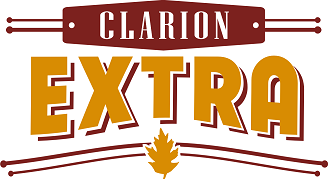The rebuilding of the dam and spillway structures at Kahle Lake in Salem Township will take about four years and will cost about $7.5 million.
Paul Urbanik, the state Fish & Boat Commission’s chief of engineering, said in 2016 that seepage from the lake dam is causing deterioration of the main and secondary spillways. The deterioration, in turn, is affecting the stability of the main dam structure.
The entire concrete spillway structure is deficient and must be replaced; spillway capacity and seepage also must be addressed.
It’s a plan Jack Bish Jr., the informal leader of “The Friends of Kahle Lake” group, calls good news with a bit of bad news.
Part of the plan will involve removal of as many fish as possible from the water before completely draining the 47-year-old lake.
According to the plan provided to Bish by the legislative liaison to the Fish & Boat Commission, design and construction contracts are administered by the Department of General Services. However, the Fish & Boat Commission remains involved in the day-to-day decisions associated with the project.
Michael Baker International, which was selected as the consulting engineer, will design improvements to the dam. The design will take about 10 months to complete.
It will take an additional 10 to 15 months to secure the required permits for the project, followed by the bidding process for construction work.
Actual construction is anticipated to begin around January 2023, with the work expected to be completed around October 2024.
About the lake
Kahle Lake is a 251-acre impoundment owned by the Fish & Boat Commission, which is located on the border of Clarion and Venango counties near Lamartine.
It provides fishing opportunities for largemouth bass, bluegill, yellow perch, black crappies, walleye and brown bullhead.
Drawdown and fish salvage
During construction or rehabilitation of a dam, the embankment and spillway structure becomes vulnerable to failures during flood events.
To reduce the risk of a dam failure and downstream flooding, the reservoir will slowly be drained and emptied. Prior to fully draining the lake, the fish within the reservoir will be salvaged and relocated to a nearby public reservoir.
Construction
To repair the spillway’s structural deficiencies, the old spillway will be demolished to make way for a reinforced concrete spillway.
The proposed spillway will likely be a labyrinth or a dropbox type of spillway with a concrete outlet channel and energy dissipaters.
The new spillway will be more hydraulically efficient than the existing spillway; therefore it can be constructed in a smaller footprint to reduce construction costs.
Reservoir refilling
Upon completion of construction, the reservoir will be refilled at a controlled rate of about 1 foot per week.
This will allow the engineering staff to monitor the dam embankment and spillway as the depth of water is gradually increased.
Fishery re-establishment
To facilitate rapid restoration of the warm-water and cool-water fish communities anticipated to become self-sustaining at Kahle Lake, two concurrent management approaches are typically applied.
First, juvenile fish, selected by the area fisheries manager, are sequentially stocked to facilitate development of a balanced fish community.
Given the infancy of the project, staff members haven’t determined specific species that will require reintroduction to achieve desired goals.
The fishery plan usually begins formalizing after the fish salvage and coordination with habitat management.
Second, fish harvest is disallowed (catch-and-release rules applied) until fish communities become self-sustaining and exhibit size structure deemed appropriate/acceptable for angler harvest without need for continued stocking.
Following attainment of self-sustaining status, Kahle Lake will be designated for a program that will allow harvest, but the precise program has not yet been determined.

